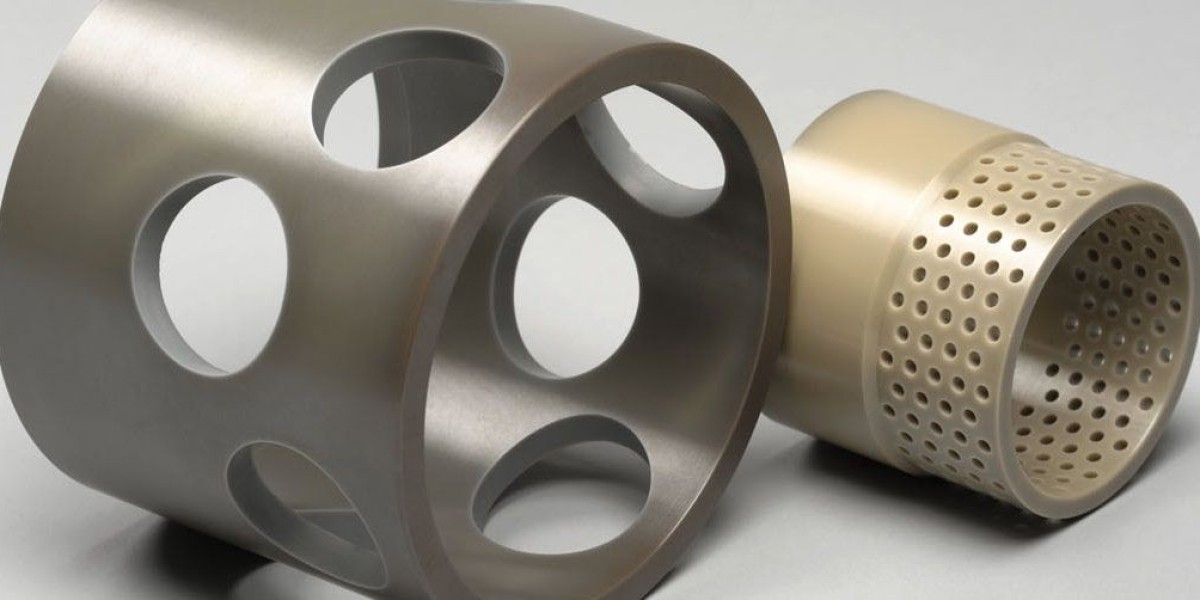Advanced ceramics can be defined as inorganic, nonmetallic materials processed at elevated temperatures. Typical advanced ceramics are crystalline, although some are amorphous or partially crystalline. They exhibit enhanced or special properties such as high strength, hardness or toughness; resistance to heat, wear or chemicals; or special electric or thermal properties. They are typically polycrystalline, which means they are composed of many small crystals or crystallites. This means they don't share the single crystal perfection that enables properties like piezoelectricity or ferroelectricity in single crystal materials. Instead they rely on the shape and distribution of crystallites to achieve their properties.
Ceramic Materials and Their Applications
There are several classes of Advanced Ceramics materials with distinct applications. Aluminum oxide (Al2O3) ceramics provide hardness and wear resistance for uses like cutting tools, abrasives and armor. Silicon carbide (SiC) has extremely high strength even at elevated temperatures, making it suitable for applications such as furnace heating elements and diesel engine components. Silicon nitride (Si3N4) is nearly as strong as SiC but with a lower density, making it useful for bearings and gas turbine engines. Zirconia (ZrO2) ceramics provide a combination of toughness and strength that makes them suitable as dental implants, oxygen sensors and solid oxide fuel cells. Ultra high temperature ceramics based on hafnium carbide (HfC) and hafnium diboride (HfB2) can withstand temperatures up to 3000°C, enabling applications such as nose cones on reentry vehicles.
Processing and Properties of Ceramic Materials
The performance and properties of advanced ceramics are strongly influenced by their method of fabrication. Raw ceramic powders are typically mixed with a liquid and formed into a specified shape through processes like tape casting, injection molding or extrusion. The formed part is then dried and subjected to sintering at high temperature, where mass transport phenomena cause the powder particles to fuse into a solid body with grain boundaries between the crystallites. The microstructure of the sintered ceramic, including features like grain size and distribution, largely determine its final properties. Additional post-processing treatments such as hot isostatic pressing can further densify the ceramic and improve properties. Careful control of processing conditions allows tailoring the structure to maximize properties like strength, toughness and thermal shock resistance.
Ceramic Coatings and Thin Films
While bulk ceramic materials find many applications, ceramic coatings and thin films also play an important technological role. Thermal barrier coatings based on yttria-stabilized zirconia (YSZ) allow turbine engine components to operate at higher temperatures. The YSZ coating, typically 200-300 μm thick, forms an insulating layer that shields the metal substrate from extreme heat. Hard coatings based on titanium nitride, aluminum titanium nitride or chromium nitride enhance the wear resistance, corrosion resistance and hardness of cutting tools, drills and other implements. Optical coatings made of materials like silica (SiO2) and hafnia (HfO2) enable anti-reflective and selective emissivity properties in applications such as eyeglasses, architectural glass and thermal control coatings for spacecraft. New techniques like atomic layer deposition allow precise control at the nanoscale to engineer graded multilayer coatings for specialized functions.
Future Directions in Ceramic Technology
Research is ongoing to develop the next generation of advanced ceramics with even higher performance. A specific area of focus involves increasing the fracture toughness of ceramics through techniques like crack deflection and grain bridging. Another approach involves applying concepts from metallurgy to engineer self-healing behavior into ceramics through the use of reactive element additives. Improved joining and integration of ceramics with other materials continues to enable broader applications. New processing technologies based on additive manufacturing open possibilities for net shape fabrication of complex ceramic components. The development of multifunctional ceramics that are tailored to simultaneously fulfill structural, electronic and optical functions is an important emerging field. Continued advancements in ceramic materials hold promise to transform industries from energy to transportation to consumer technology over the coming decades. Get More Insights: Advanced Ceramics
For More Insights Discover the Report In language that Resonates with you
About Author:
Ravina Pandya, Content Writer, has a strong foothold in the market research industry. She specializes in writing well-researched articles from different industries, including food and beverages, information and technology, healthcare, chemical and materials, etc. (https://www.linkedin.com/in/ravina-pandya-1a3984191)








